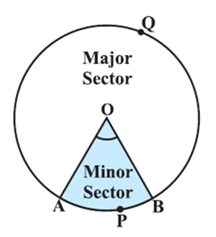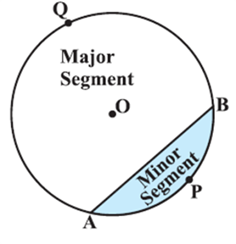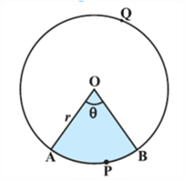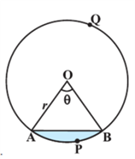- Books Name
- Kaysons Academy Maths Foundation Book
- Publication
- Kaysons Publication
- Course
- JEE
- Subject
- Maths
Chapter -12
AREAS RELATED TO CIRCLES
Introduction
You are already familiar with some methods of finding perimeters and areas of simple plane figures such as rectangles, squares, parallelograms, triangles and circles from your earlier classes. Many objects that we come across in our daily life are related to the circular shape in some form or the other. Cycle wheels, wheel barrow (thela), dartboard, round cake, papad, drain cover, various designs, bangles, brooches, circular paths, washers, flower beds, etc. are some examples of such objects (see Fig). So, the problem of finding perimeters and areas related to circular figures is of great practical importance. In this chapter, we shall begin our discussion with a review of the concepts of perimeter (circumference) and area of a circle and apply this knowledge in finding the areas of two special ‘parts’ of a circular region (or briefly of a circle) known as sector and segment. We shall also see how to find the areas of some combinations of plane figures involving circles or their parts Fig.

Perimeter and Area of a Circle — A Review
Recall that the distance covered by travelling once around a circle is its perimeter, usually called its circumference. You also know from your earlier classes, that circumference of a circle bears a constant ratio with its diameter. This constant ratio is denoted by the Greek letter π (read as ‘pi’). In other words,
![]()
![]()
![]()
![]()
Areas of Sector and Segment of a Circle
You have already come across the terms sector and segment of a circle in your earlier classes. Recall that the portion (or part) of the circular region enclosed by two radii and the corresponding arc is called a sector of the circle and the portion (or part) of the circular region enclosed between a chord and the corresponding arc is called a segment of the circle. Thus, in Fig. Shaded region OAPB is a sector of the circle with centre O. ∠ AOB is called the angle of the sector. Note that in this figure, unshaded region OAQB is also a sector of the circle. For obvious reasons, OAPB is called the minor sector and OAQB is called the major sector. You can also see that angle of the major sector is 360° – ∠ AOB.

Now, look at Fig, in which AB is a chord of the circle with centre O. So, shaded region APB is a segment of the circle. You can also note that unshaded region AQB is another segment of the circle formed by the chord AB. For obvious reasons, APB is called the minor segment and AQB is called the major segment.

Remark: When we write ‘segment’ and ‘sector’ we will mean the ‘minor segment’ and the ‘minor sector’ respectively, unless stated otherwise. Now with this knowledge, let us try to find some relations (or formulae) to calculate their areas.
Let OAPB be a sector of a circle with centre O and radius r (see Fig). Let the degree measure of ∠AOB be θ. You know that area of a circle (in fact of a circular region or disc) is πr2.

In a way, we can consider this circular region to be a sector forming an angle of 360° (i.e., of degree measure 360) at the centre O. Now by applying the Unitary Method, we can arrive at the area of the sector OAPB as follows:
When degree measure of the angle at the centre is 360, area of the sector = πr2
So, when the degree measure of the angle at the centre is 1, area of the sector ![]()
Therefore, when the degree measure of the angle at the centre is θ, area of the sector ![]()
Thus, we obtain the following relation (or formula) for area of a sector of a circle:
Area of the sector of angle ![]()
Where r is the radius of the circle and θ the angle of the sector in degrees.
Now, a natural question arises: Can we find the length of the arc APB corresponding to this sector? Yes. Again, by applying the Unitary Method and taking the whole length of the circle (of angle 360°) as 2πr, we can obtain the required length of the arc APB as ![]()
So, length of an arc of a sector of angle![]()
Now let us take the case of the area of the segment APB of a circle with centre O and radius r (see Fig). You can see that:

Area of the segment APB = Area of the sector OAPB – Area of D OAB
![]()
Note: From Fig (1) Fig (2), respectively, you can observe that:
Area of the major sector OAQB = πr2 – Area of the minor sector OAPB
And Area of major segment AQB = πr2 – Area of the minor segment APB
Areas of Combinations of Plane Figures
So far, we have calculated the areas of different figures separately. Let us now try to calculate the areas of some combinations of plane figures. We come across these types of figures in our daily life and also in the form of various interesting designs. Flower beds, drain covers, window designs, designs on table covers, are some of such examples.

 Kaysons Publication
Kaysons Publication
